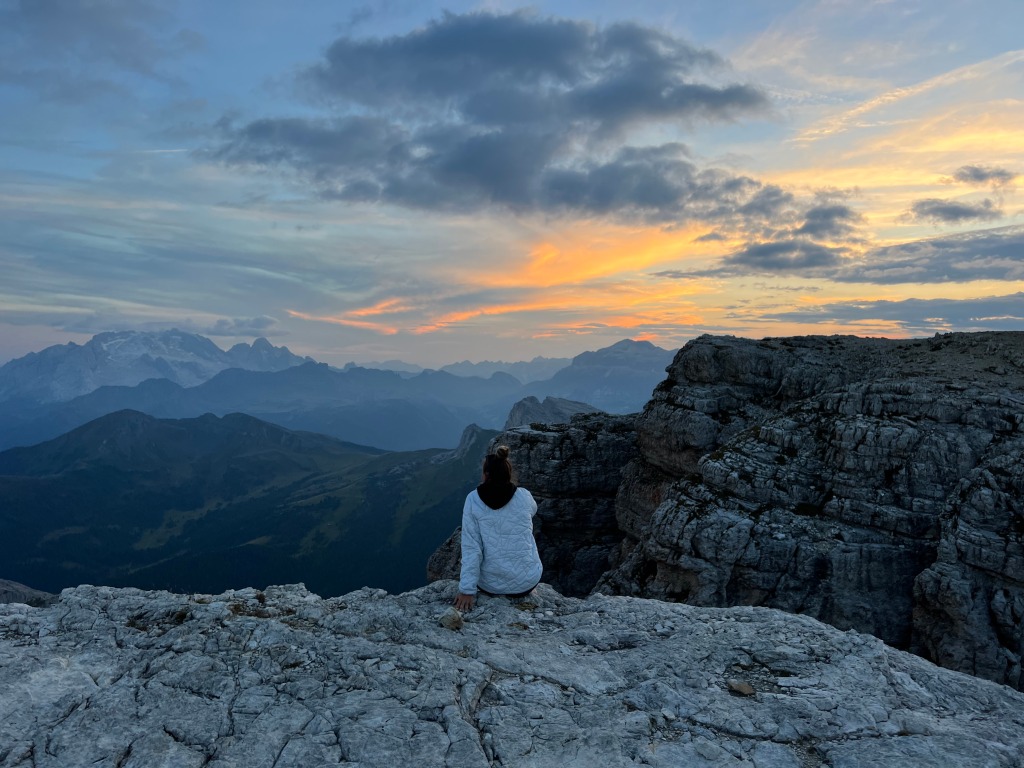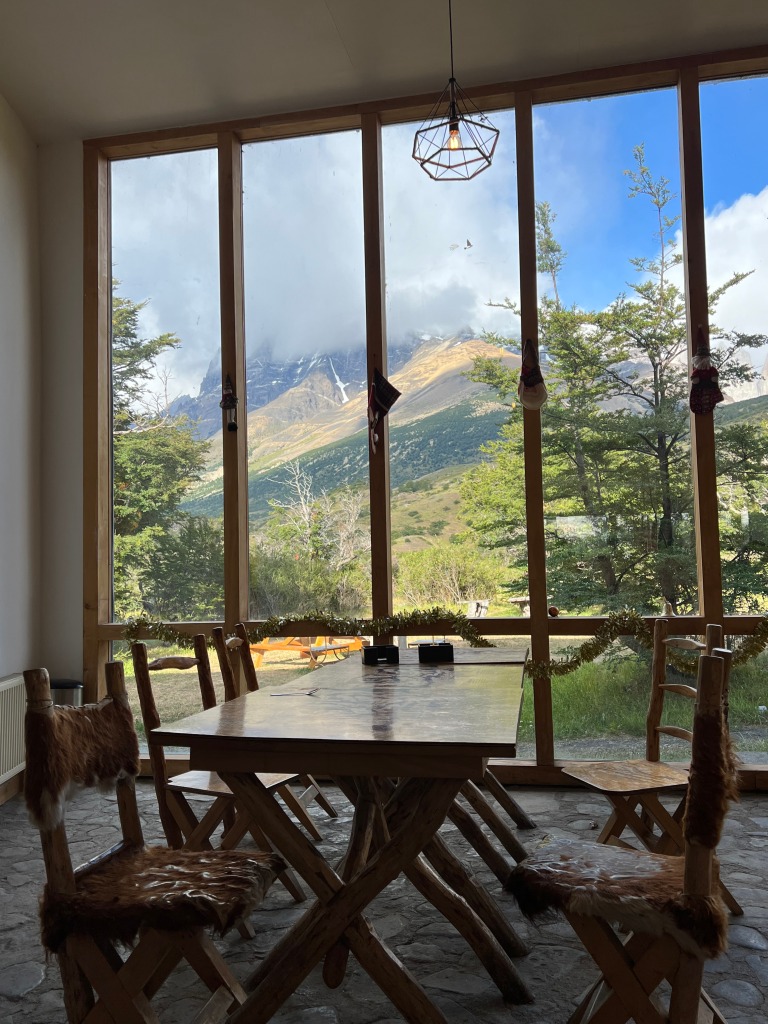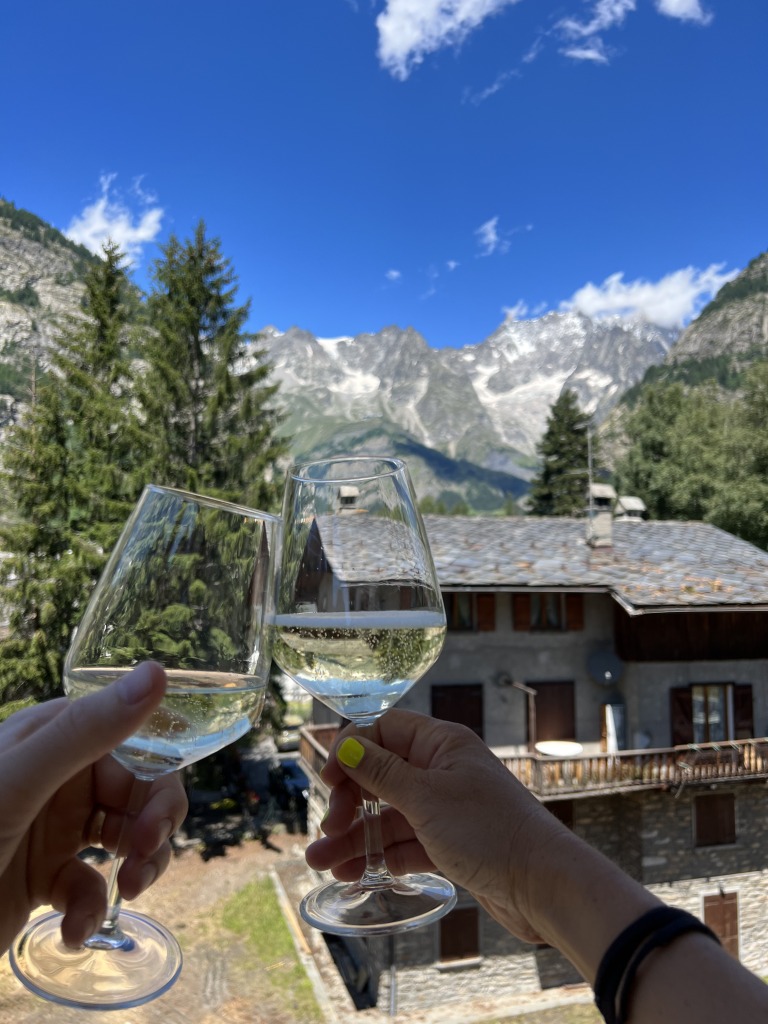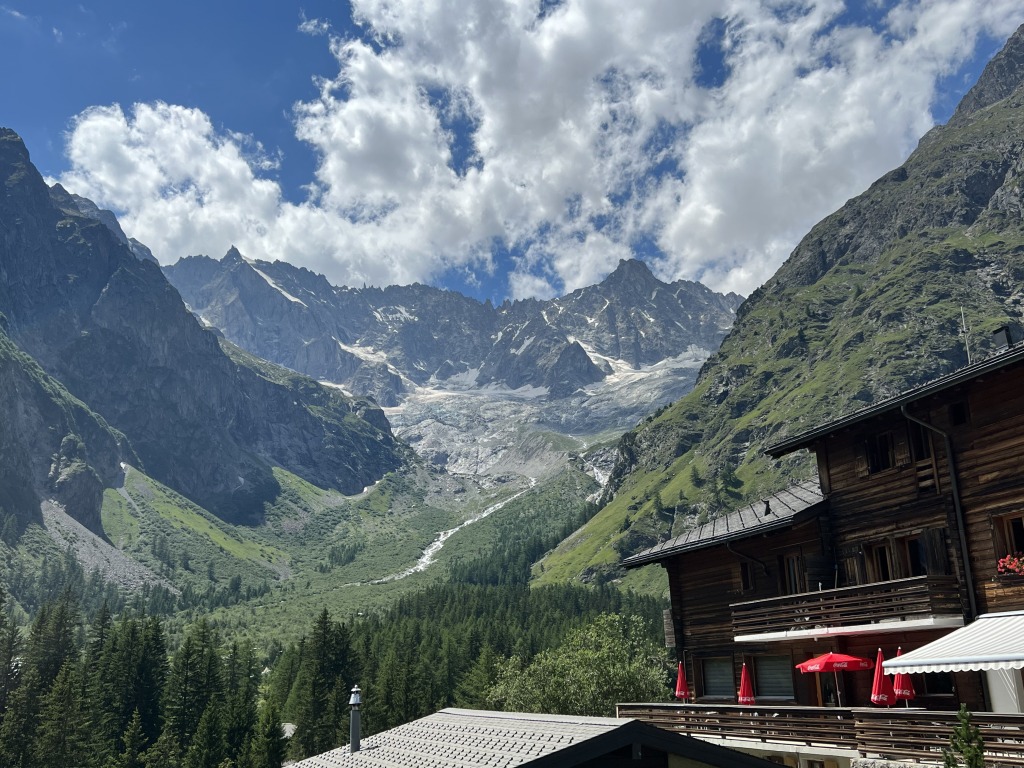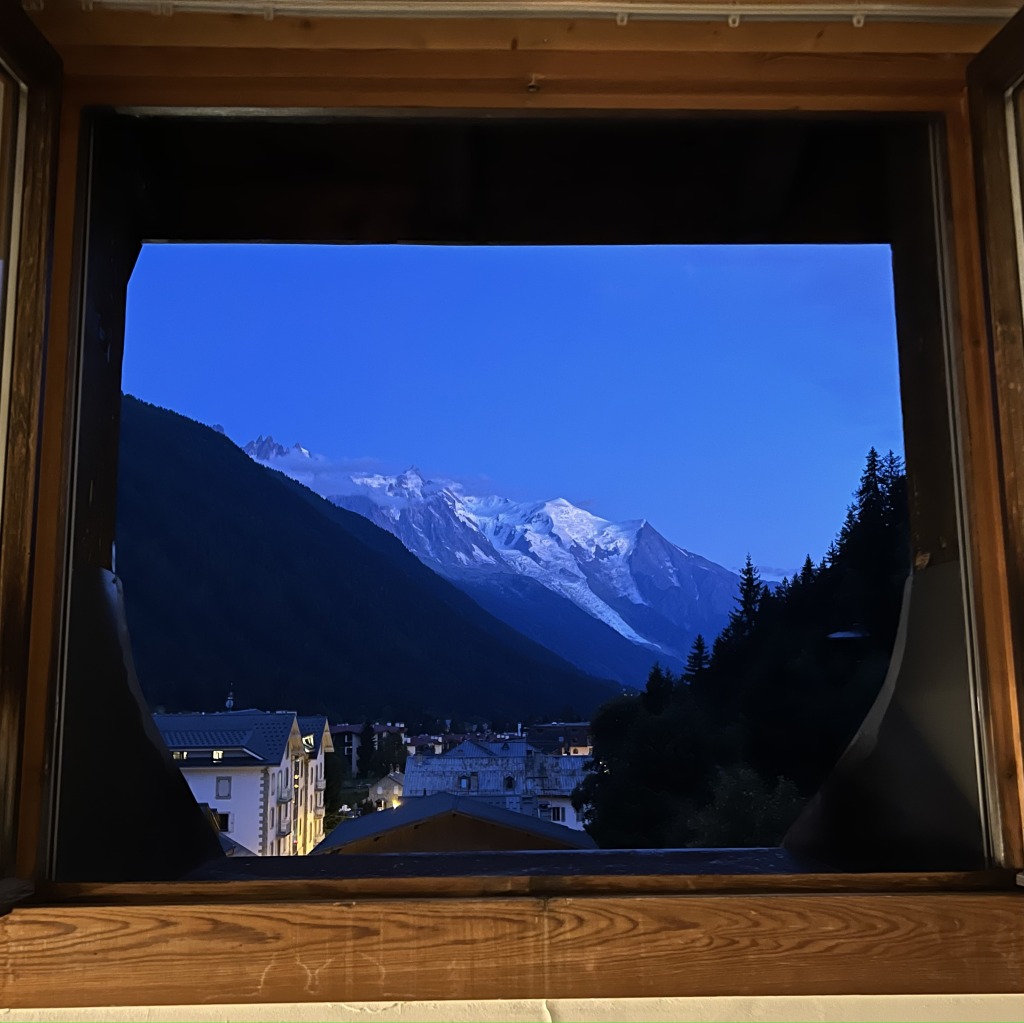Mountain Rifugios or mountain huts are some of the coolest and most fun places we’ve stayed in our travels. We have stayed in these types of accommodation now in Italy, France, Switzerland, and Chile. They can be so much fun, but there are definitely a few good things to know before you go! I am using the term Rifugio to remain consistent throughout this post, but again this word is interchangeable with mountain hut, refuge, b&b etc.
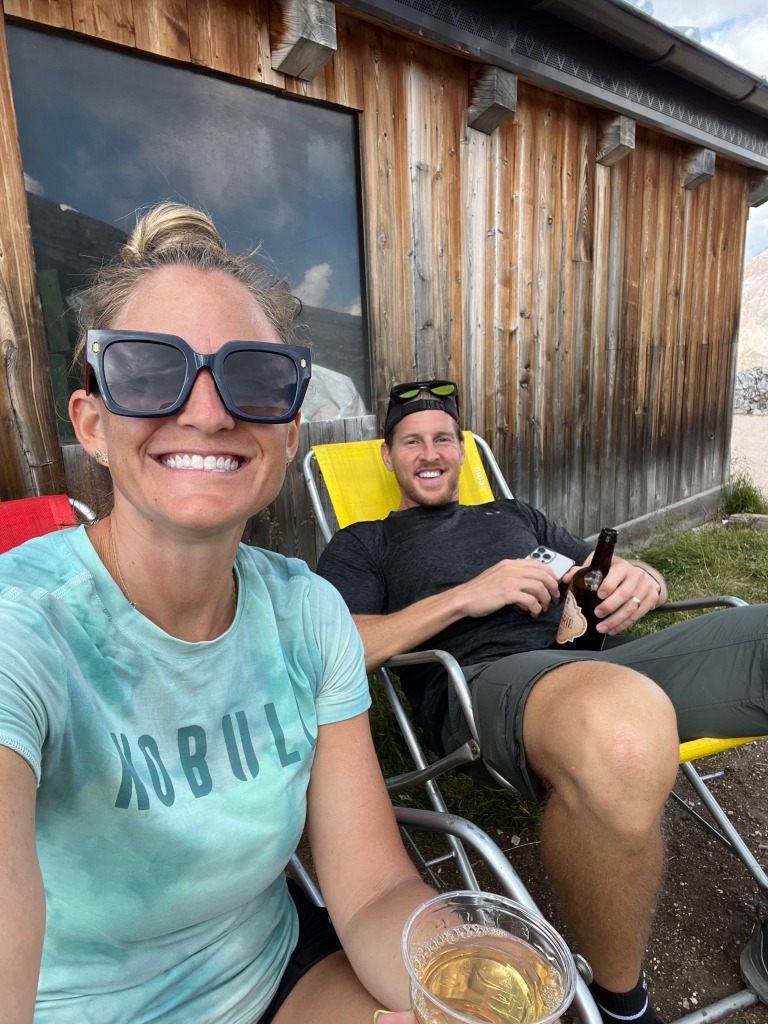
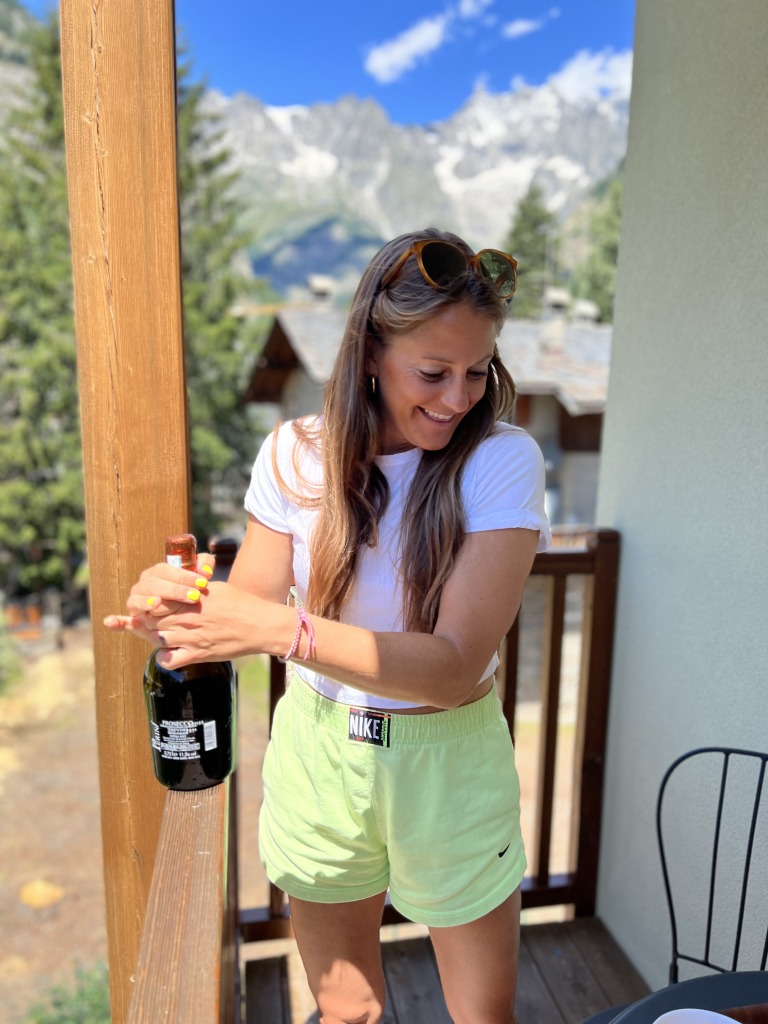
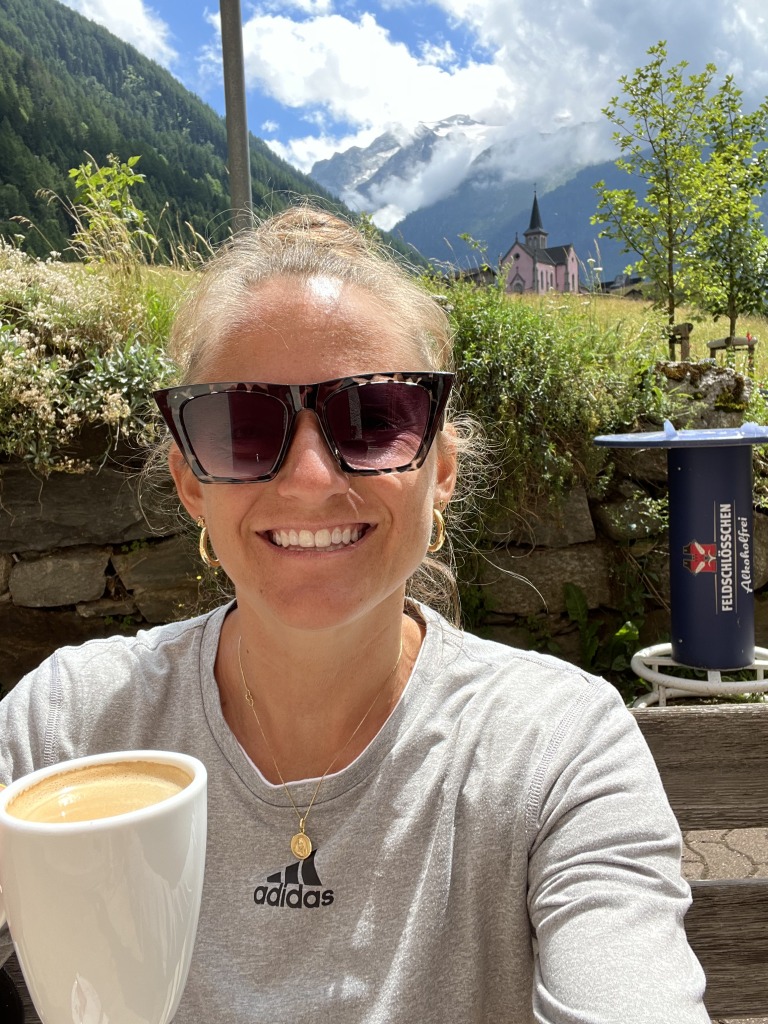
What type of rooms can you stay in?
In our experience most Rifugios have different options for type of rooms. Some have large dorm rooms, smaller dorm rooms, and private rooms. If you want private rooms you’re likely going to have to book further out and they’re going to be a bit more costly.
It is also worth noting that a private room wont 100% mean a private bathroom. You may still have shared bathroom and shower facilities so make sure to read everything carefully when booking.
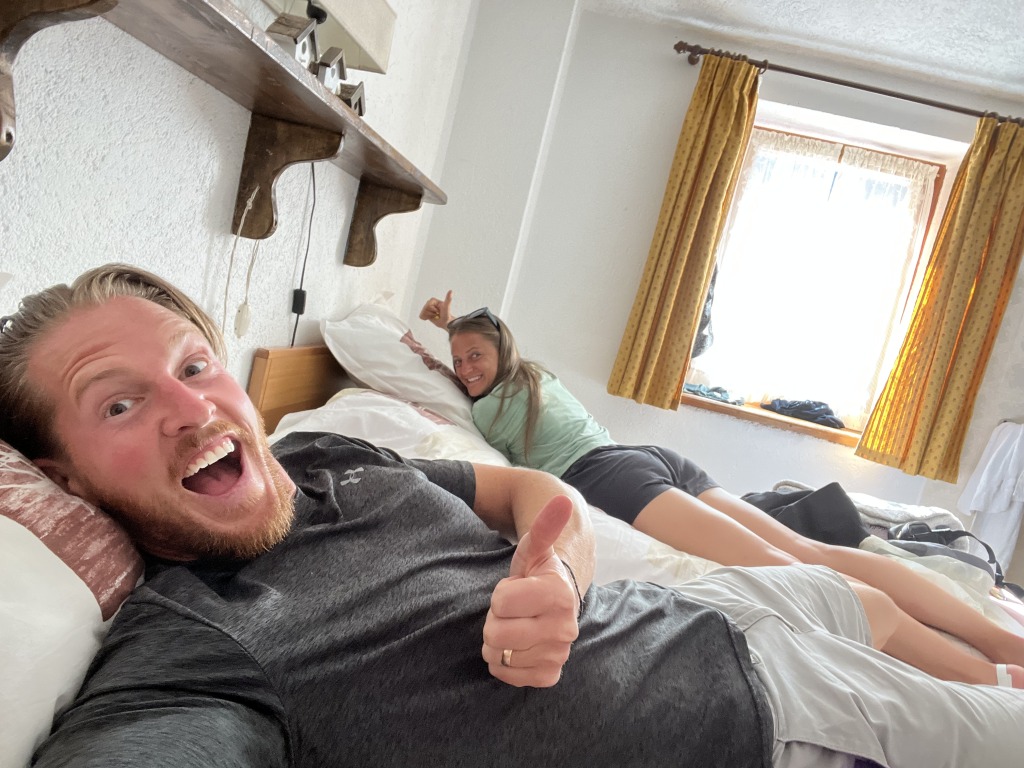
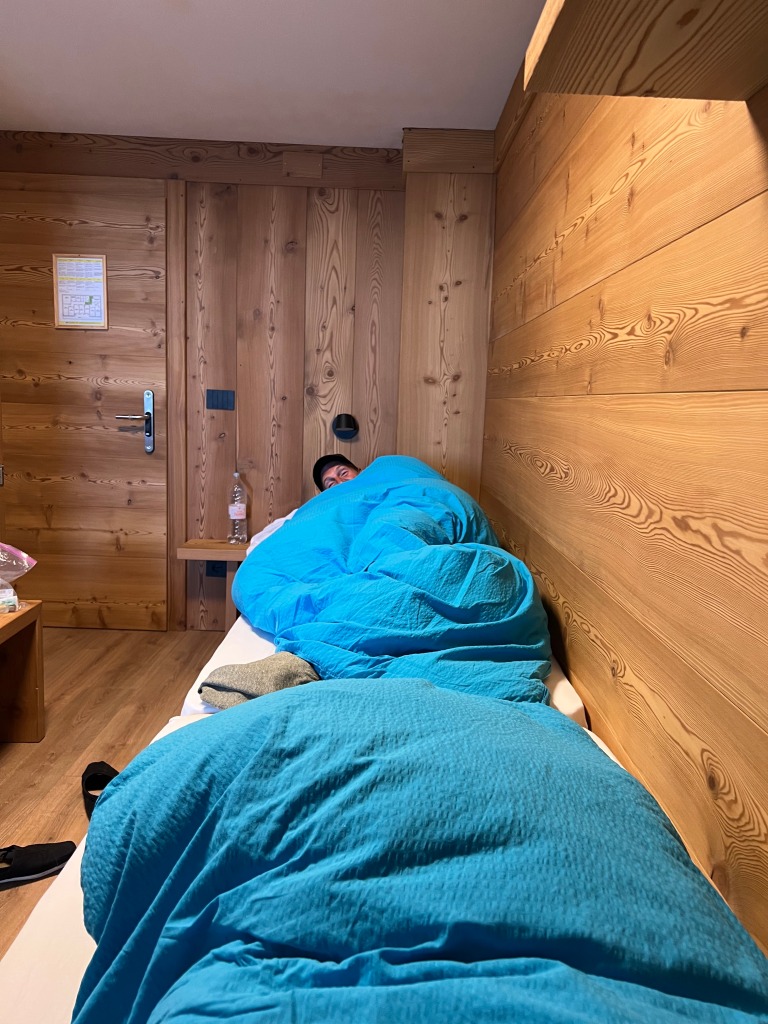
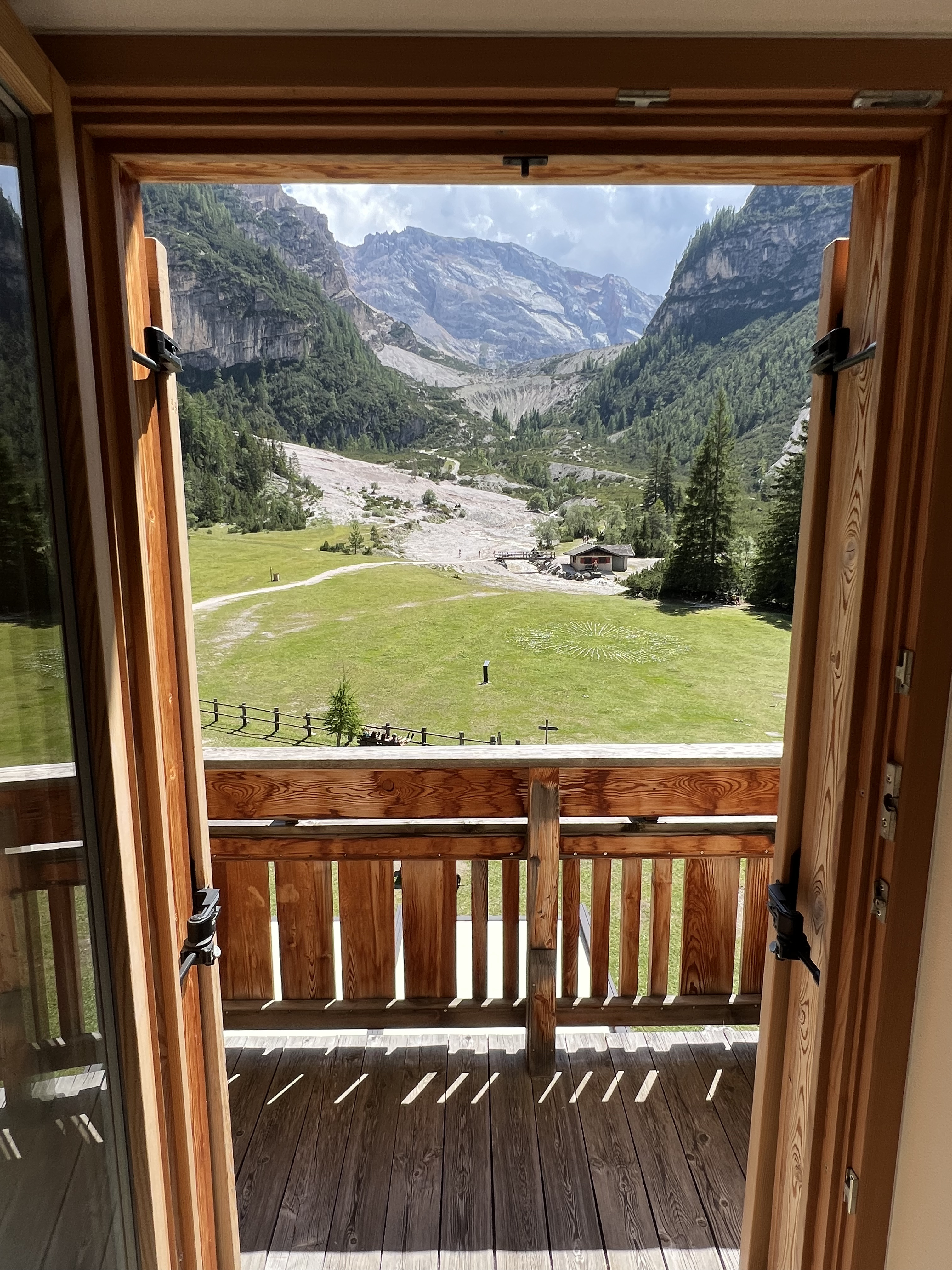
What about camping?
It’s important to research camping and know if it is allowed at, or near the place you’re staying. In Patagonia on the w-trek all of the spots had camping areas. In the Dolomites (for example) there were more rules about camping. We saw a few people doing it, but I also saw them come into Rifugios, order meals, and ask for permission before setting up anywhere near the place. There were also no arranged campsites at any of the spots in Europe like there were in Patagonia.
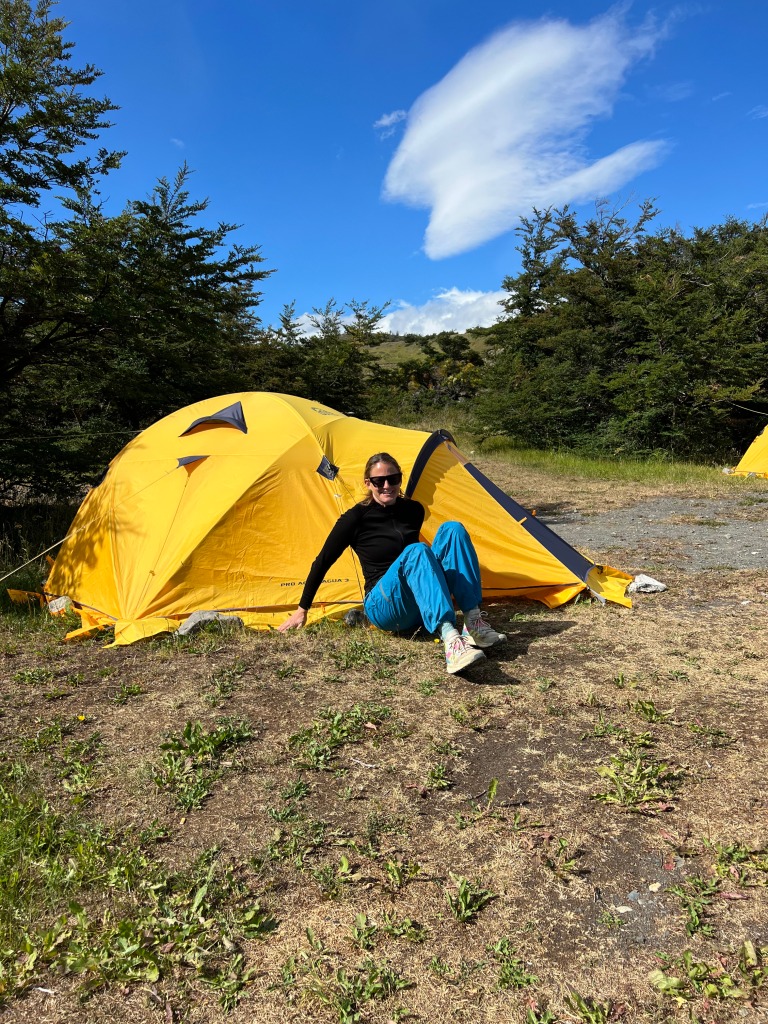
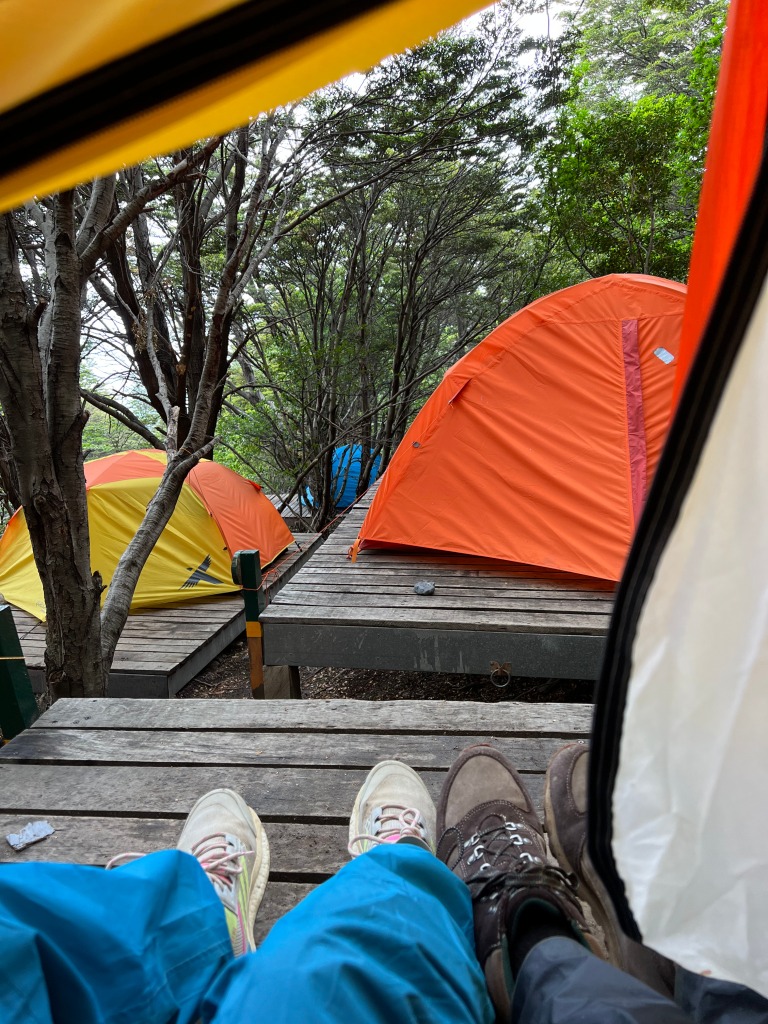
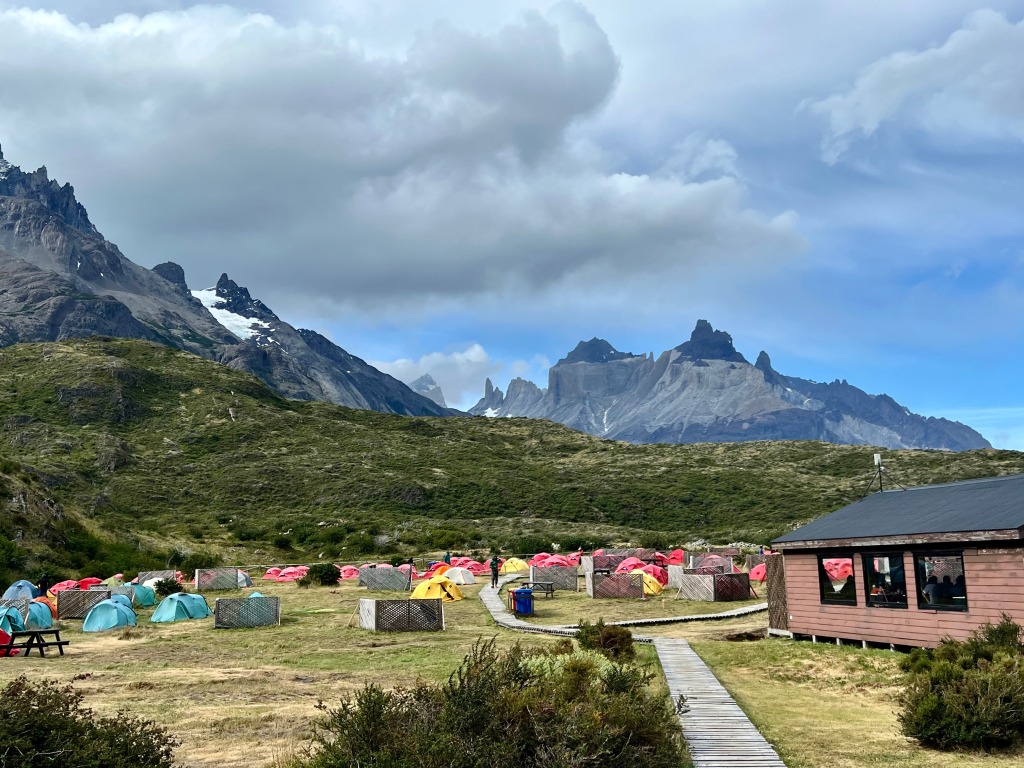
Dorm Vs Private Room
There are many positives about both types of rooms. The positive thing about Rifugios is that generally a lot of like-minded people are staying here. Most people staying overnight will be people who have hiked all day just like you. Most people staying overnight will not be up late partying (like in a hostel) because they are getting up the next morning to hike. Rifugios generally serve dinner at fixed times and most people mill around for a bit and go to bed after that. However, you still may have to contend with snoring, early risers, stinky smells, and other issues that come with a shared room. We found private rooms to be great for us. We still got to hang out and have fun with everyone at drinks and dinner but we had our own peaceful space to retreat to at the end of every night. Private rooms will come with a price, but we found it worth it.
What Amenities/Toiletries/Etc to Expect
This is also something you should look at or ask about in advance if need be. Many times you are hiking to stay in these types of accommodation and carrying extra weight can be a hassle.
I’d say as an overall rule most of them had towels, pillows, blankets, sheets, and toilet paper. But it’s really important to check before hand and know what you will need.
Do not expect shampoo, conditioner, lotion, and other toiletries of the sort. Some Rifugios will sell these things in case they are needed, but not all of them do.
Cost
The cost of Rifugios can really vary depending on a number of preferences. I wouldn’t consider staying in a Rifugio to be cheap, however you can definitely make it more affordable by staying in group rooms or camping and by adding in your meals and bagged lunch.
Availability : IMPORTANT!!
Availability is probably the most important thing when booking and planning to stay in Rifugios. They don’t house tons of people and most are at capacity on most evenings during hiking and skiing season. Make sure to book well in advance, it is unlikely that you’ll be able to just show up and stay in one!
If you’re doing a multi day hike that requires you to move from hut to hut, make sure that you can book each one. You don’t want to be stranded between huts and not have anywhere to stay for the night. Make sure to plan your hiking timing and know how long each day will take. Using a company to help with this can be very beneficial and we highly recommend Mont Blanc Treks. We have used them twice and found their service and planning to be fantastic.
What is the dining situation?
Dinner: for dinner most huts will offer dinner included with your board (make sure to book this option in advance). Otherwise you can pay for dinner separately when you are there. I think it is easier to take care of all at once up front. They will generally serve a 3 course meal of a starter, a main that is usually a meat and carb, and then a desert. Some serve a little more and some less, but they will all tell you when you check in what to expect. We have found the food in Rifugios to be quite excellent!
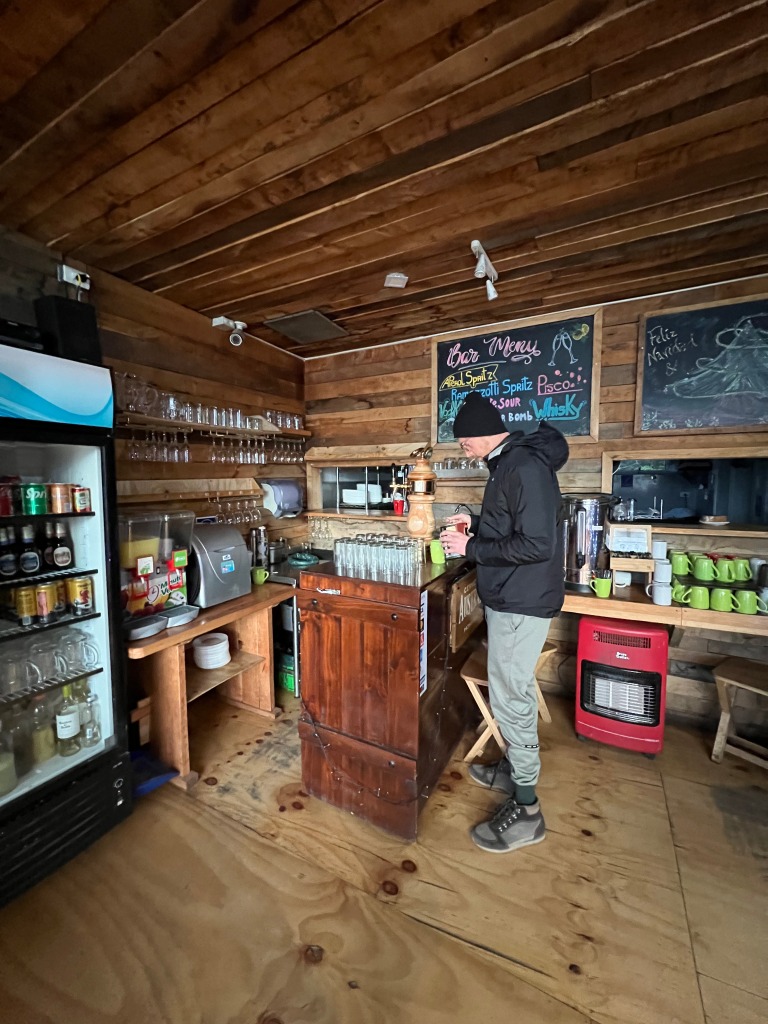
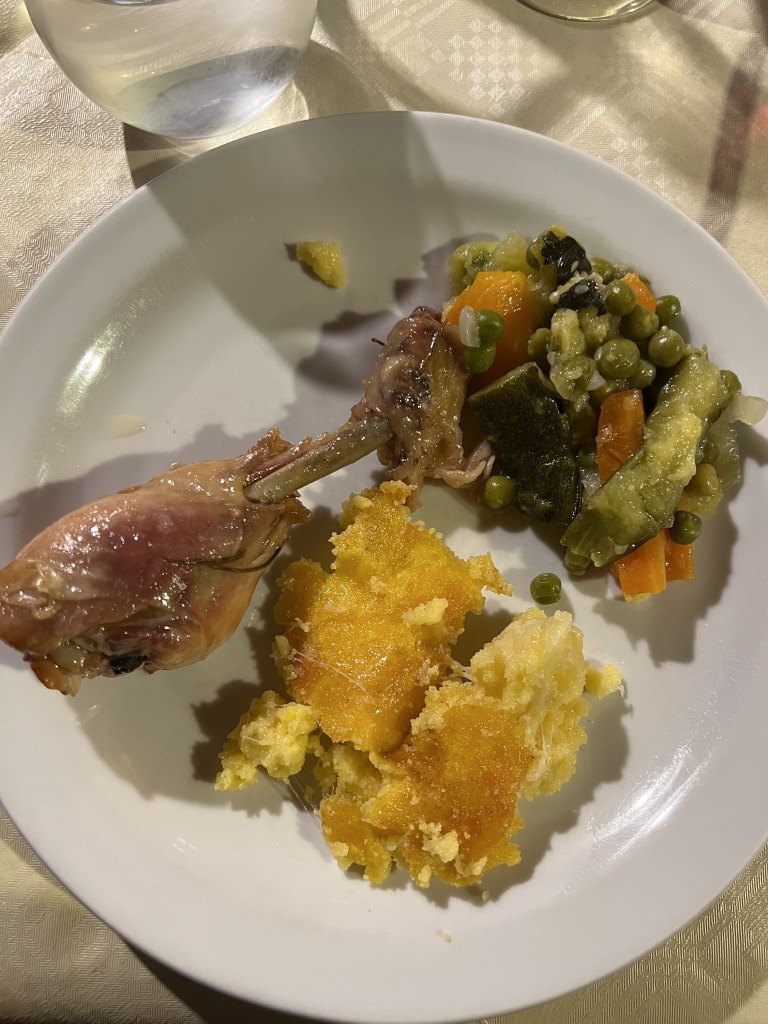
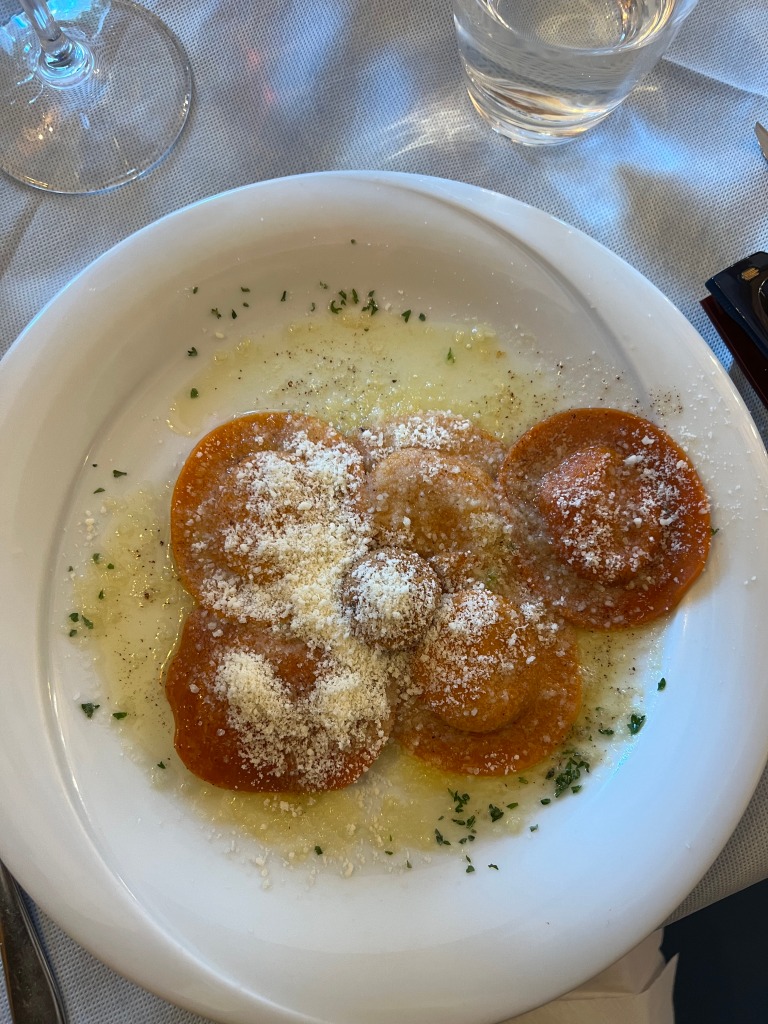
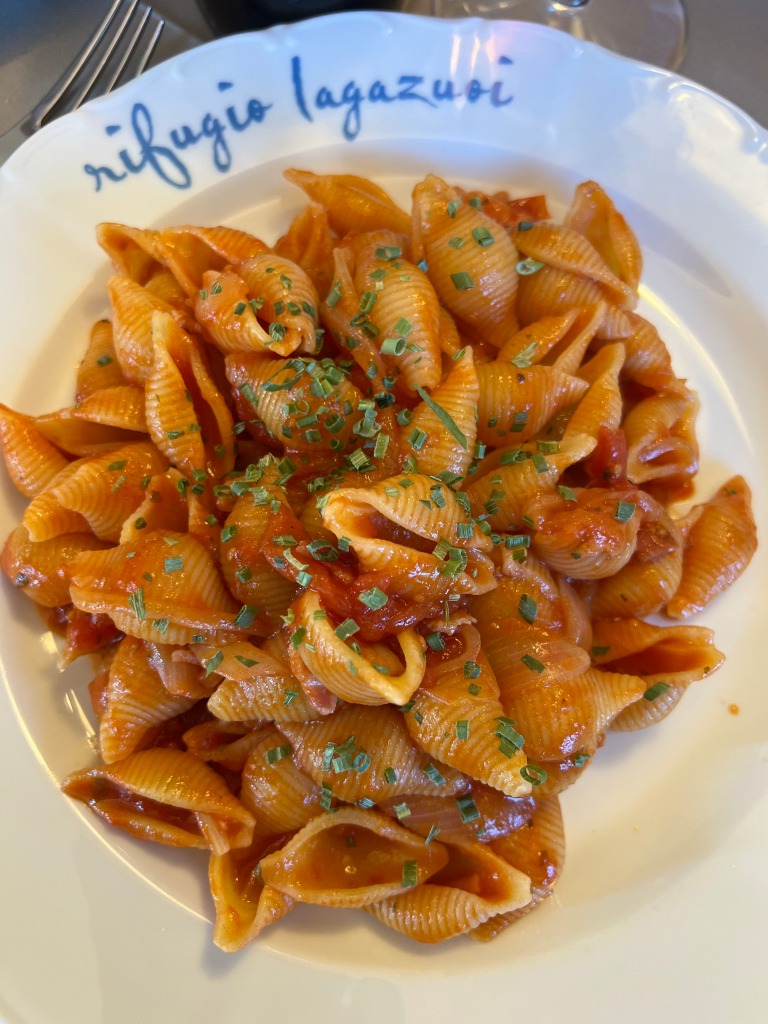
Lunch: For lunch you need to plan ahead. Look at your schedule for the day and note if you pass any huts during your hike. If you do, most huts serve lunch and you can get a meal on your hike. If the day isn’t going to take you past many huts, then you’ll want to order a meal at dinner to be prepared for you for the next day. They will often give you a brown bag lunch with a sandwich or two, fruit, chocolate, and some other surprises. This is usually reasonably priced and a great way to go as you can just eat any time you want while hiking. Sometimes we’ve also gotten one bagged lunch to share and also gotten some snacks along the way! Make sure to know where you’re going to be and where you’ll be passing so you can plan accordingly.
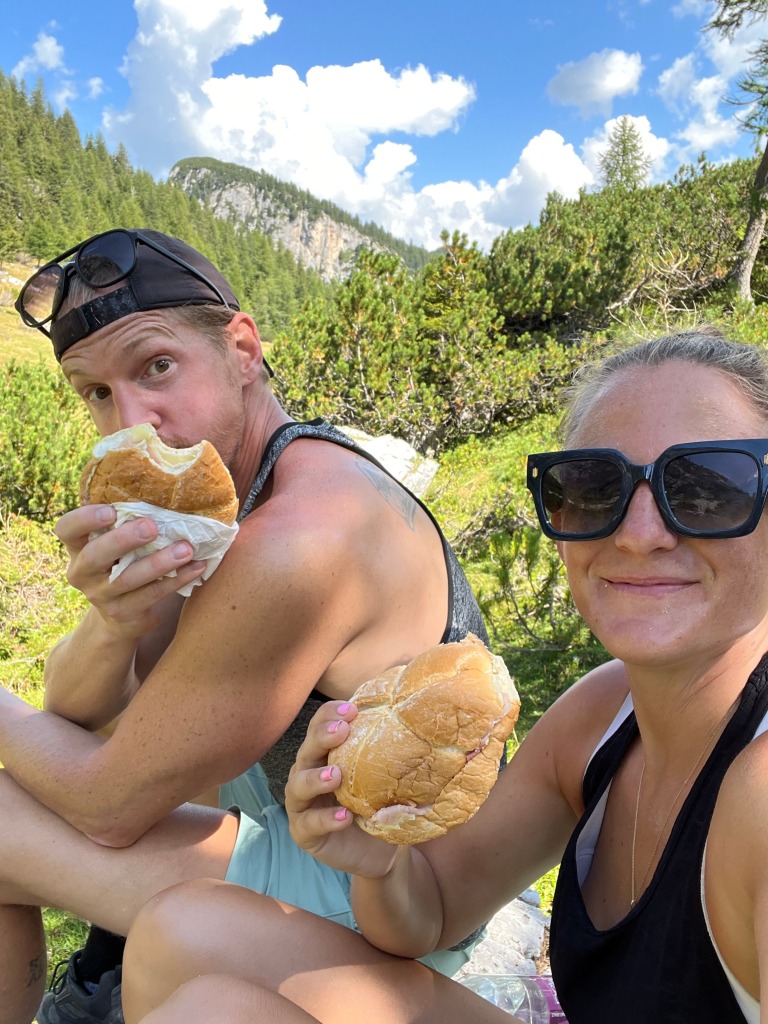
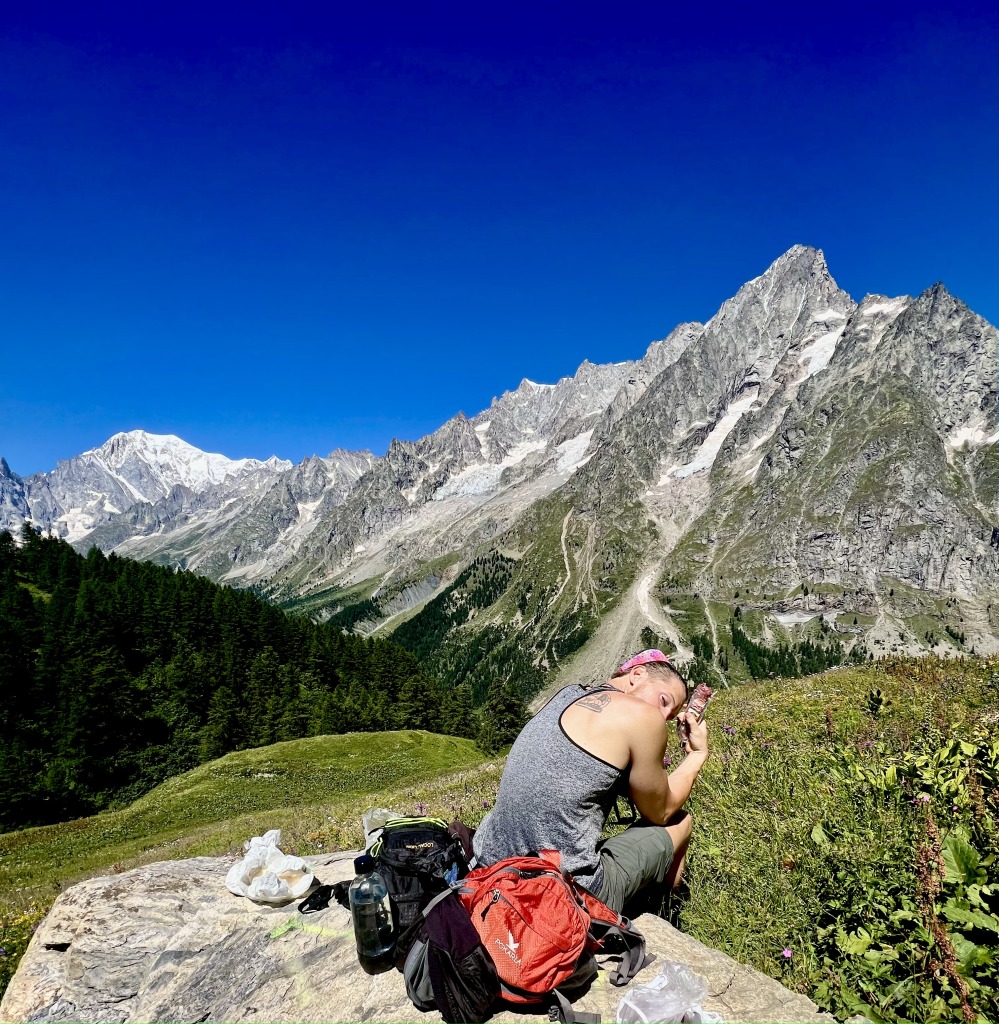
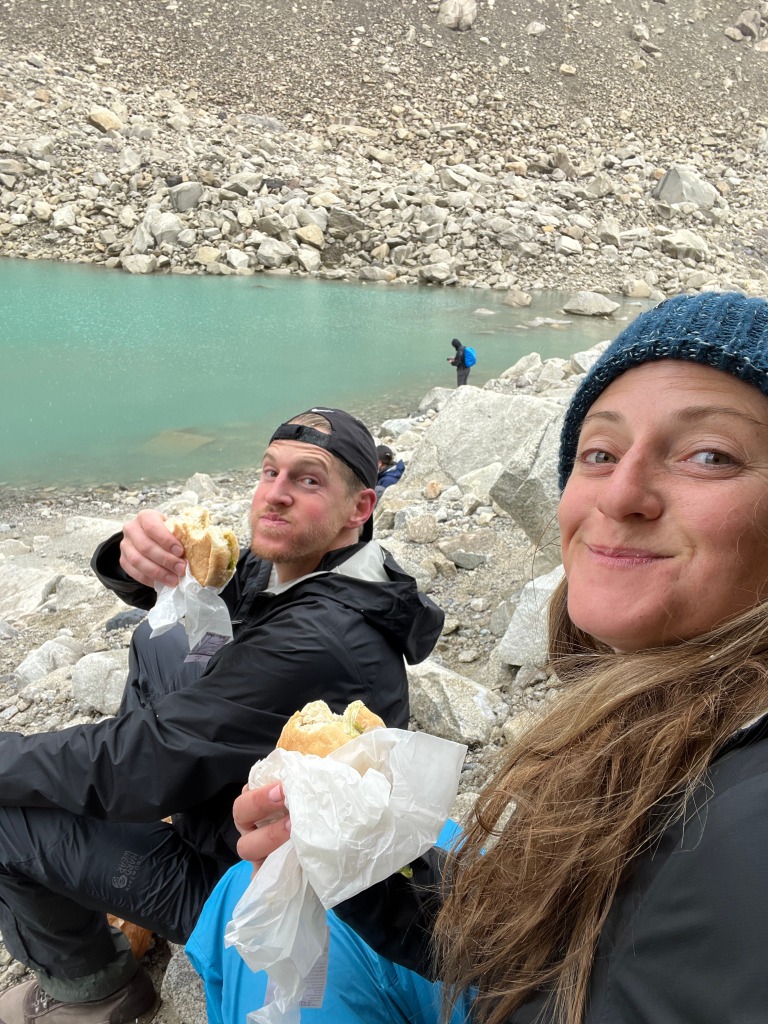
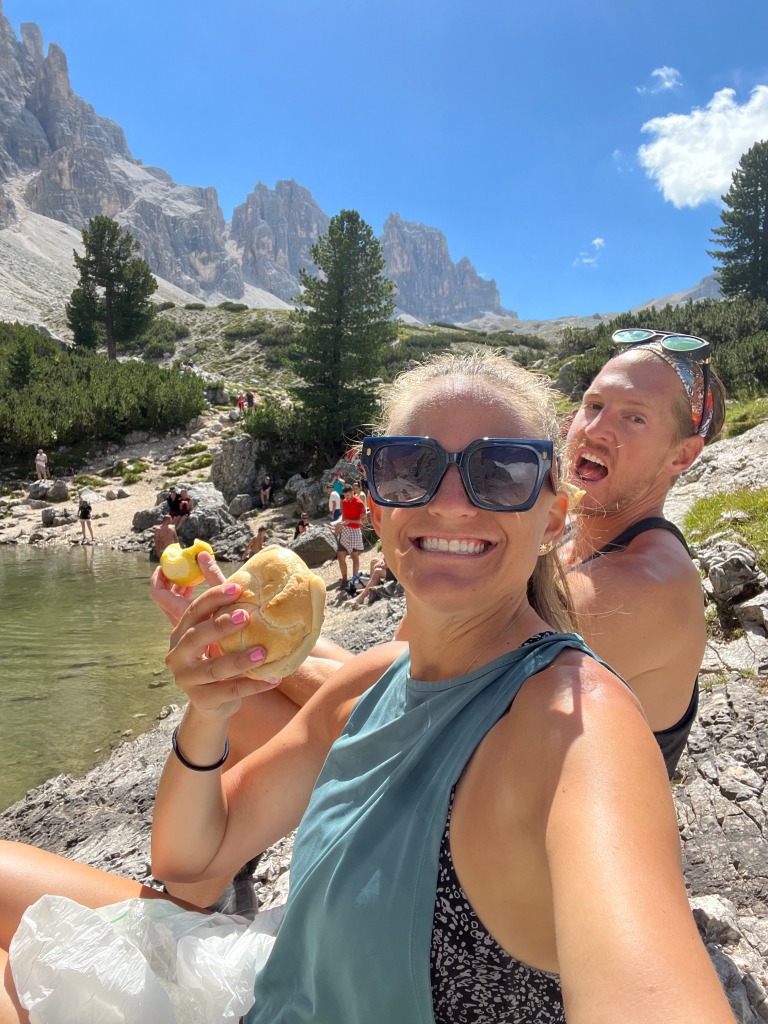

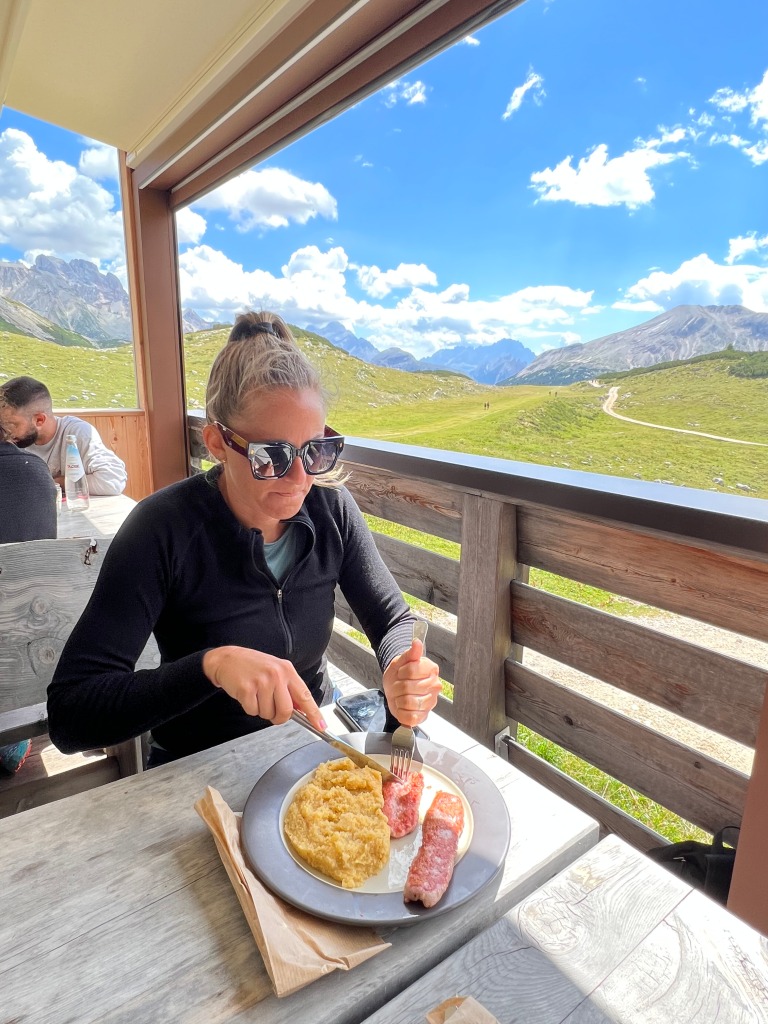
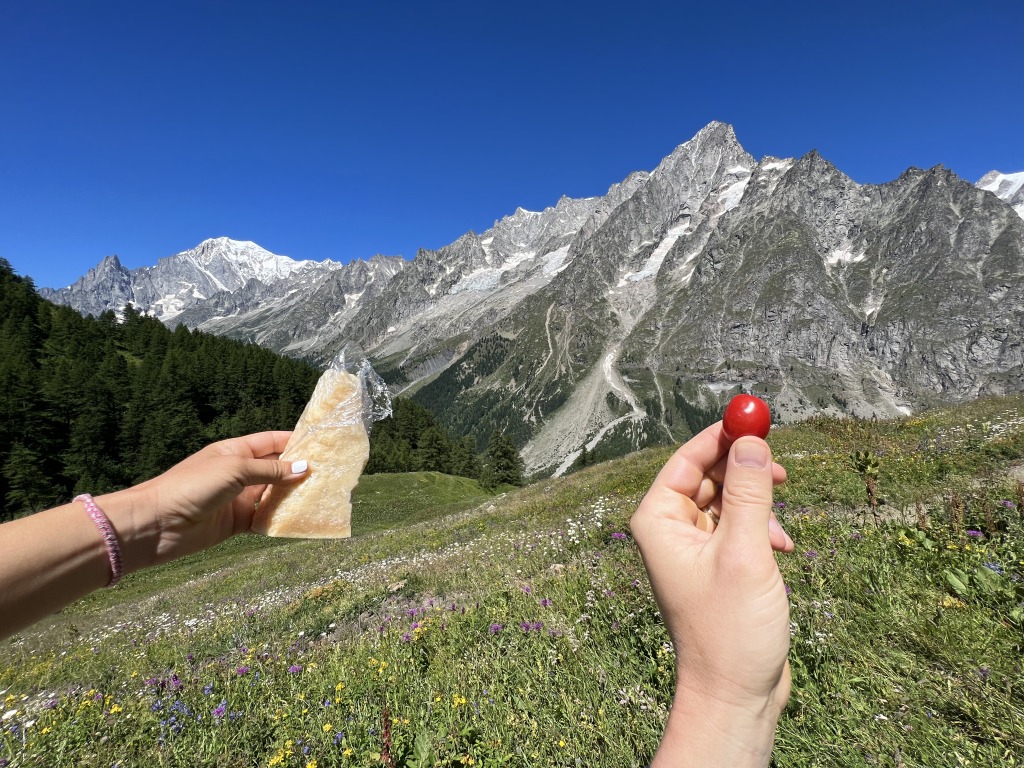
Snacks: Our favorite thing to do in almost every Rifugio we’ve ever stayed in, is to get a meat and cheese board when we arrive after a day of hiking. We have ALMOST a 100% success rate in doing this! If they don’t have this, they will be sure to have other snacks. Rifugios are also seemingly known for their sweets as people LOVE to have a sweet treat when hiking. So many people love to get pies, cakes, ice cream, etc. and it is always fantastic and homemade! People also stop for treats early in the morning, and mid day! There is seemingly no time of day that is off limits for enjoying a treat! Rifugios also generally have a great community feel after a day of hiking. It is so much fun to grab a drink and hang out with other hikers talking about the day!
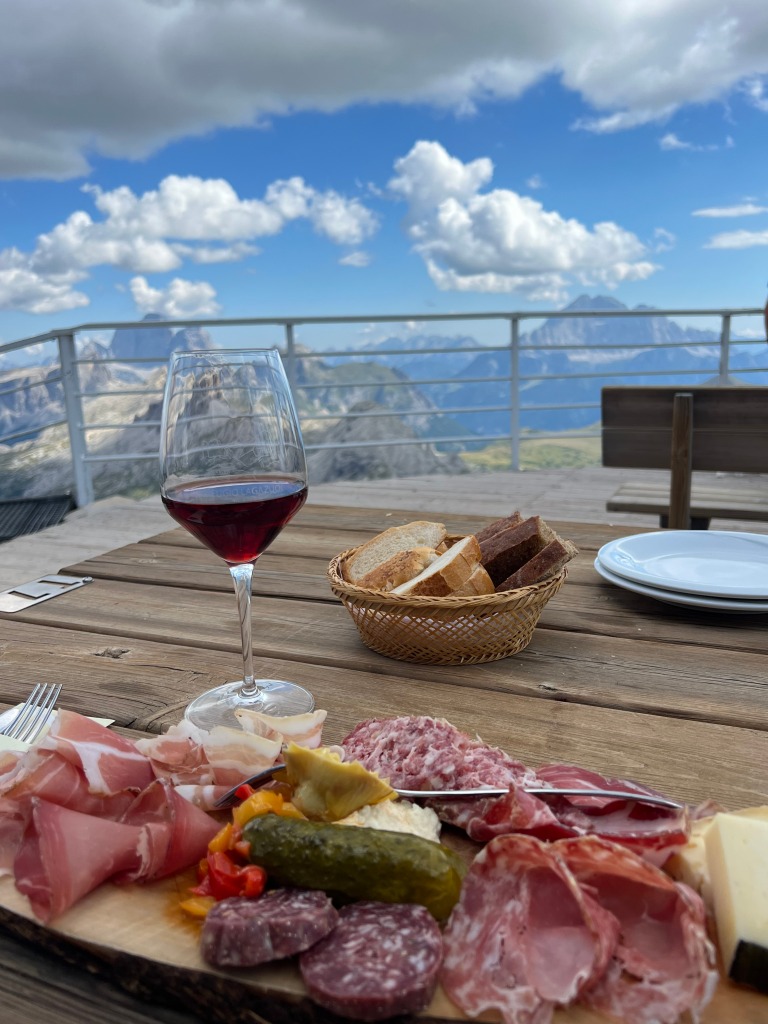
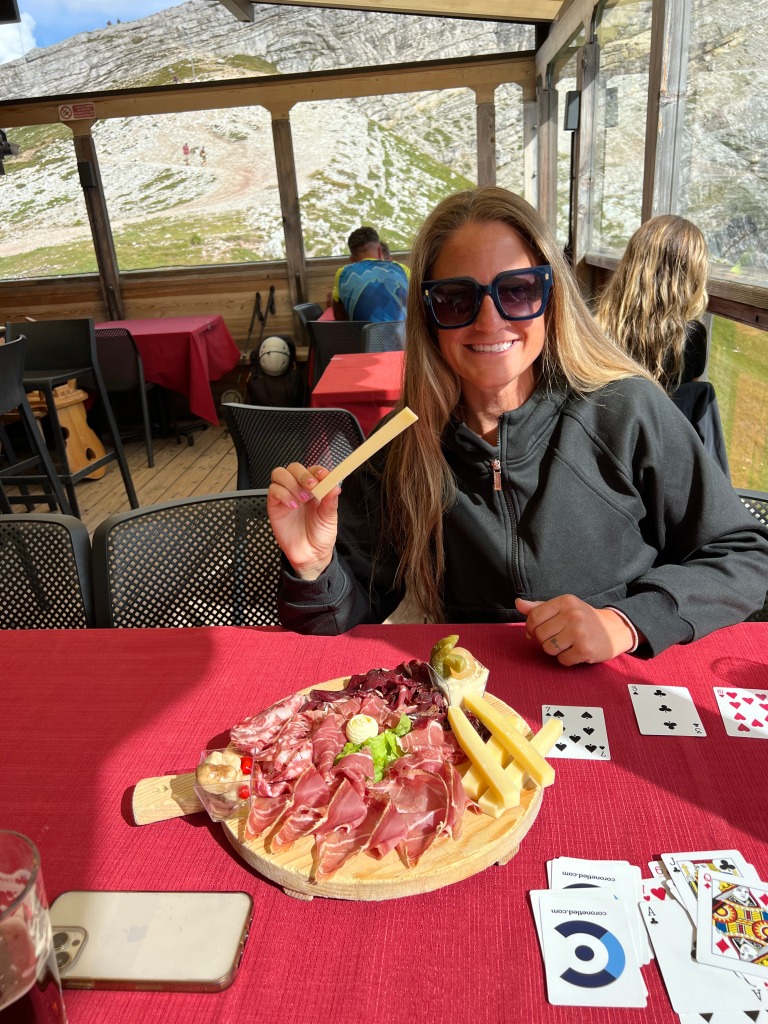
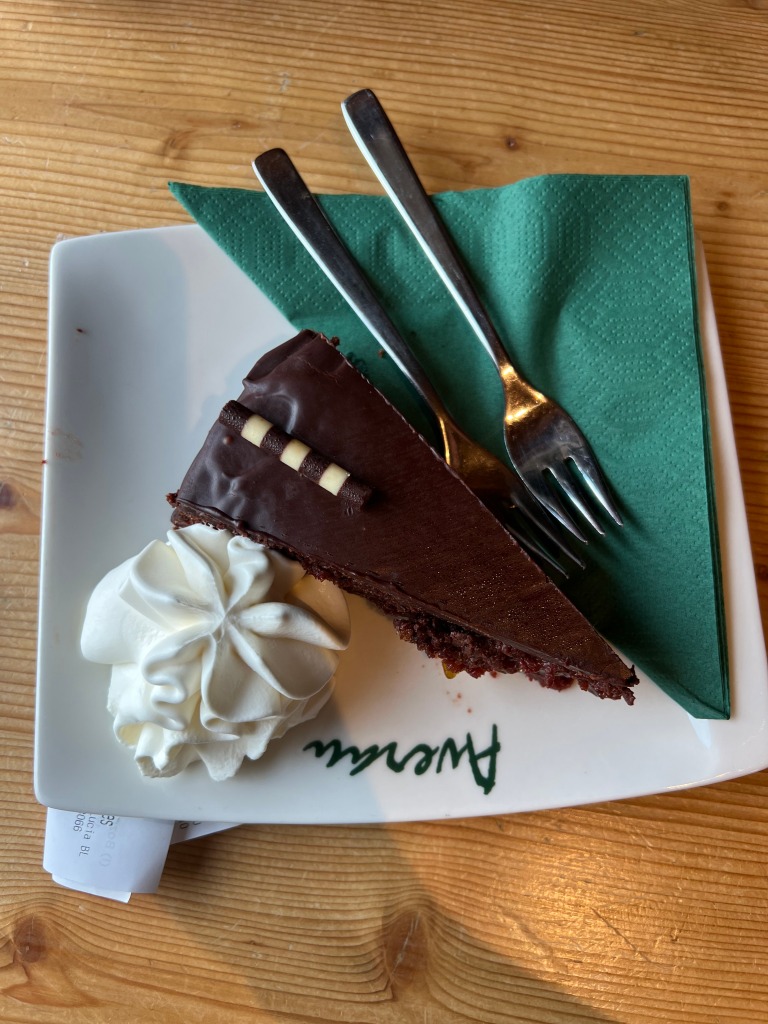
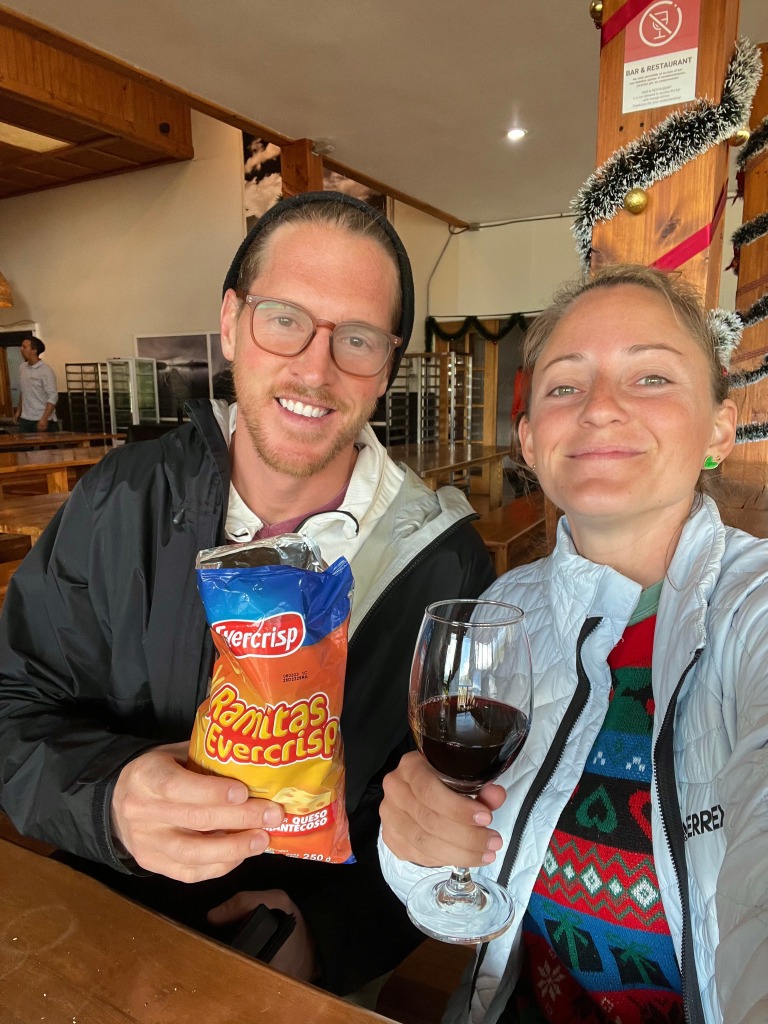
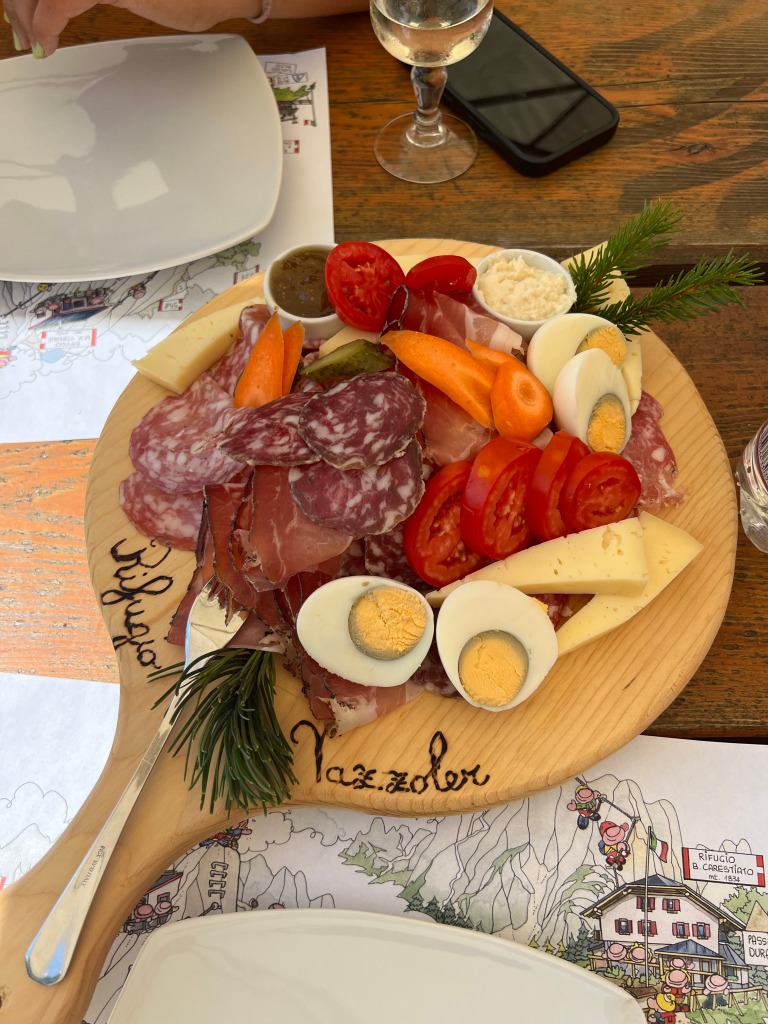

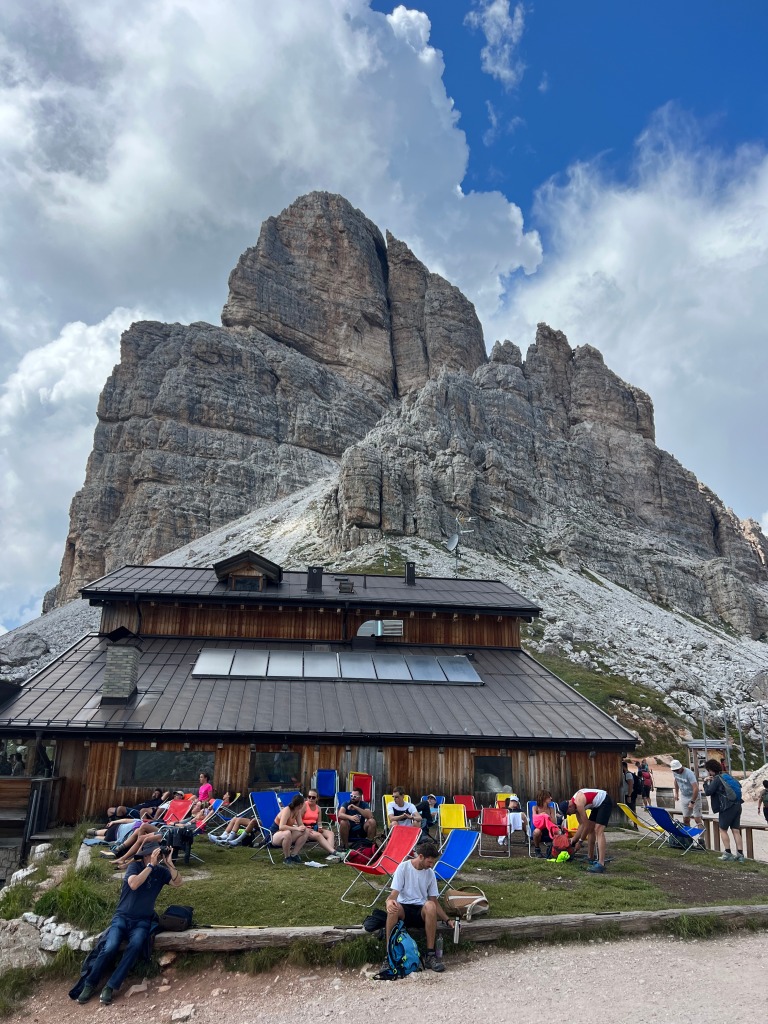
Locations
Again, it is important to do your research on locations. We have stayed in quite a few Rifugios that were right on the side of a road or had road access making them accessible to non hikers as well. We have also stayed in a few that only had hike or cable car access. Make sure you know how to get to and from the place you’re staying and that the way of transport works for you. Generally, the more remote the location the more “rustic” the Rifugio might be. This isn’t a bad thing, just something to note. Some of the more remote locations have timed showers, or less options for meals etc.
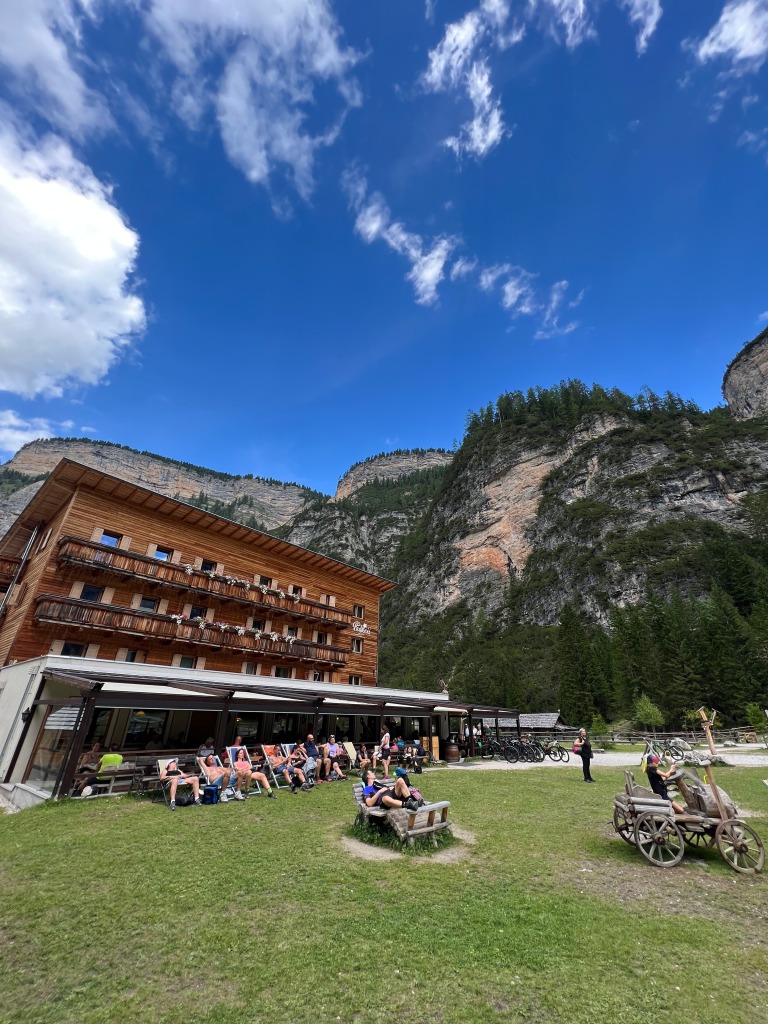
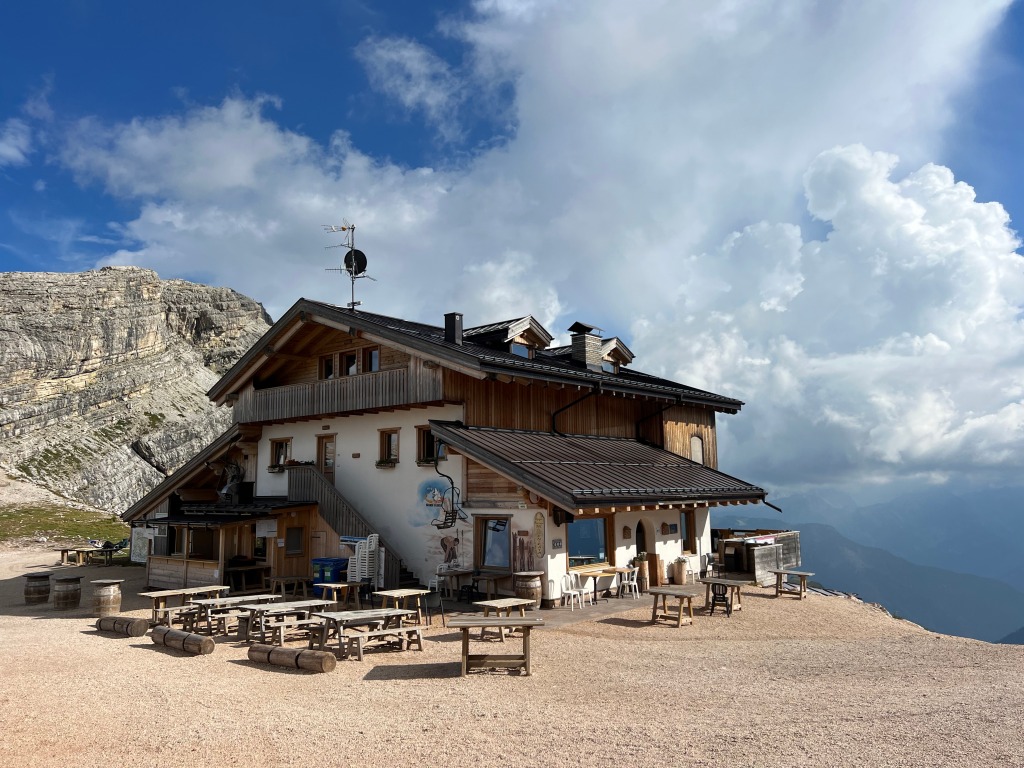
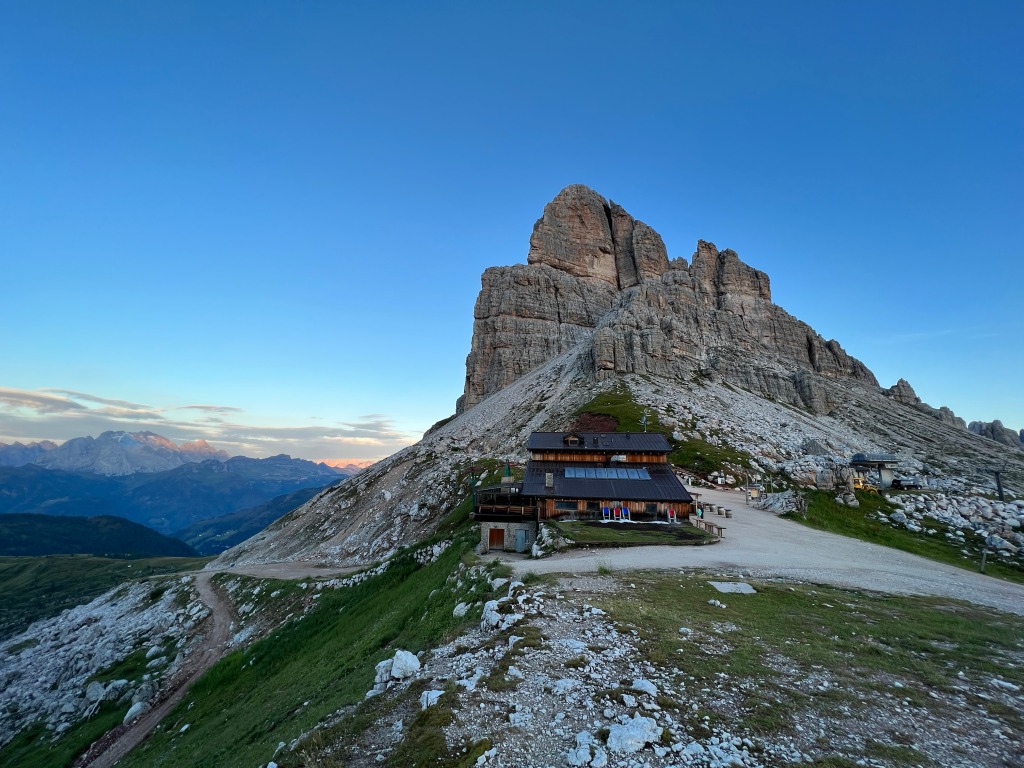
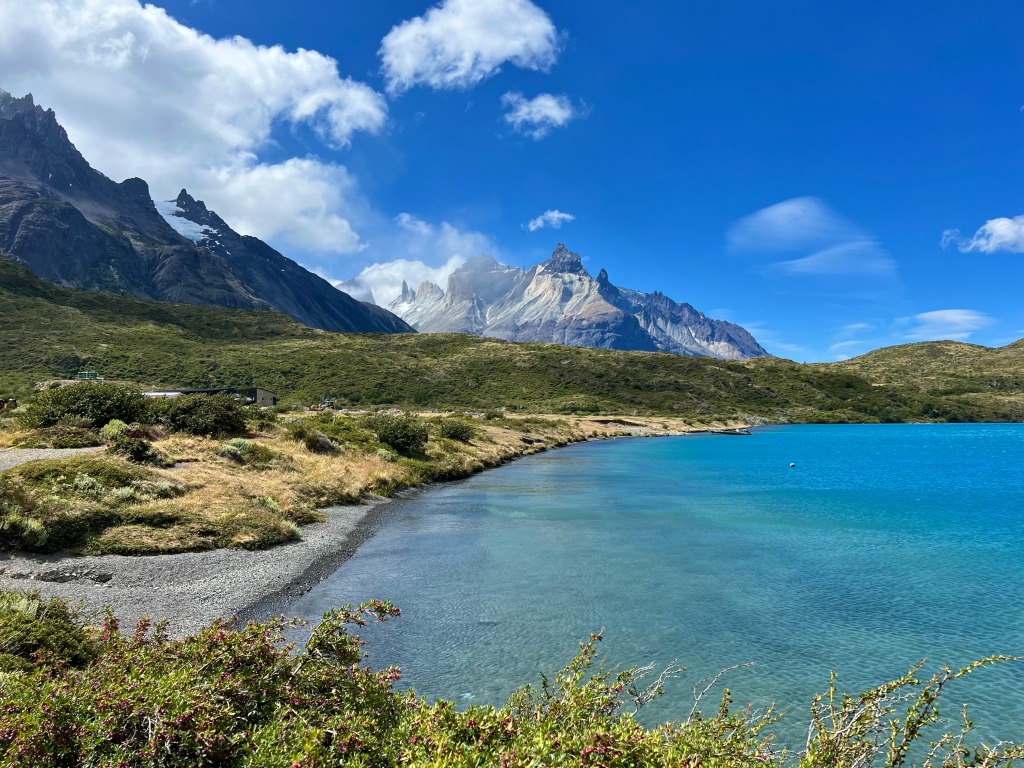
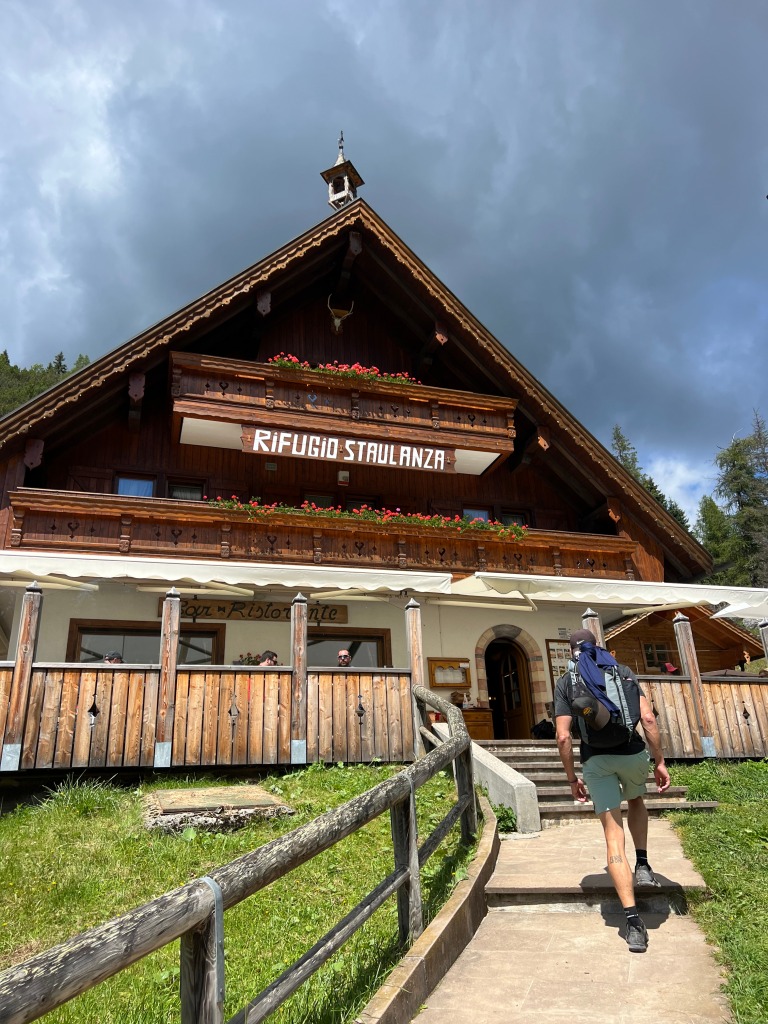
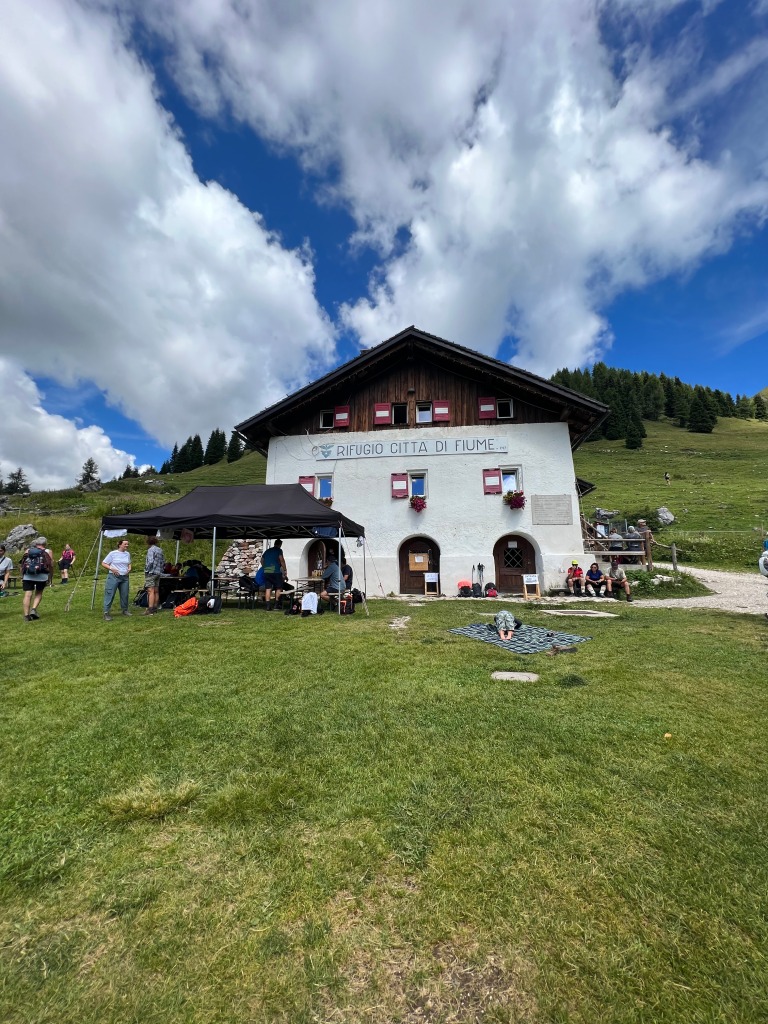
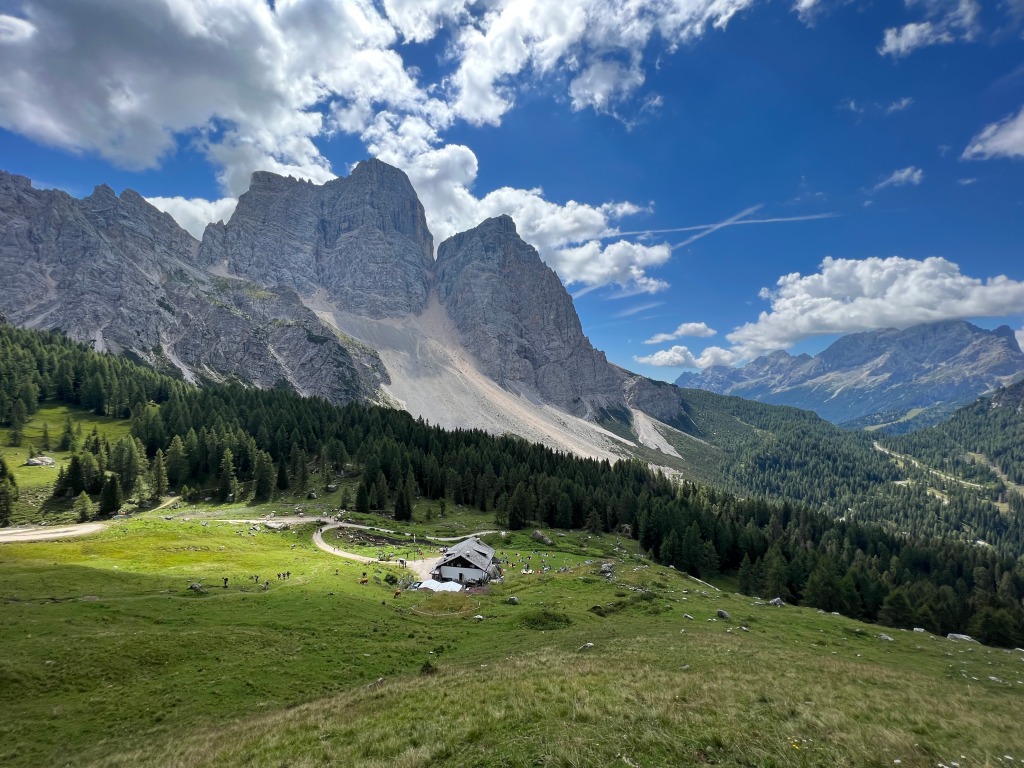
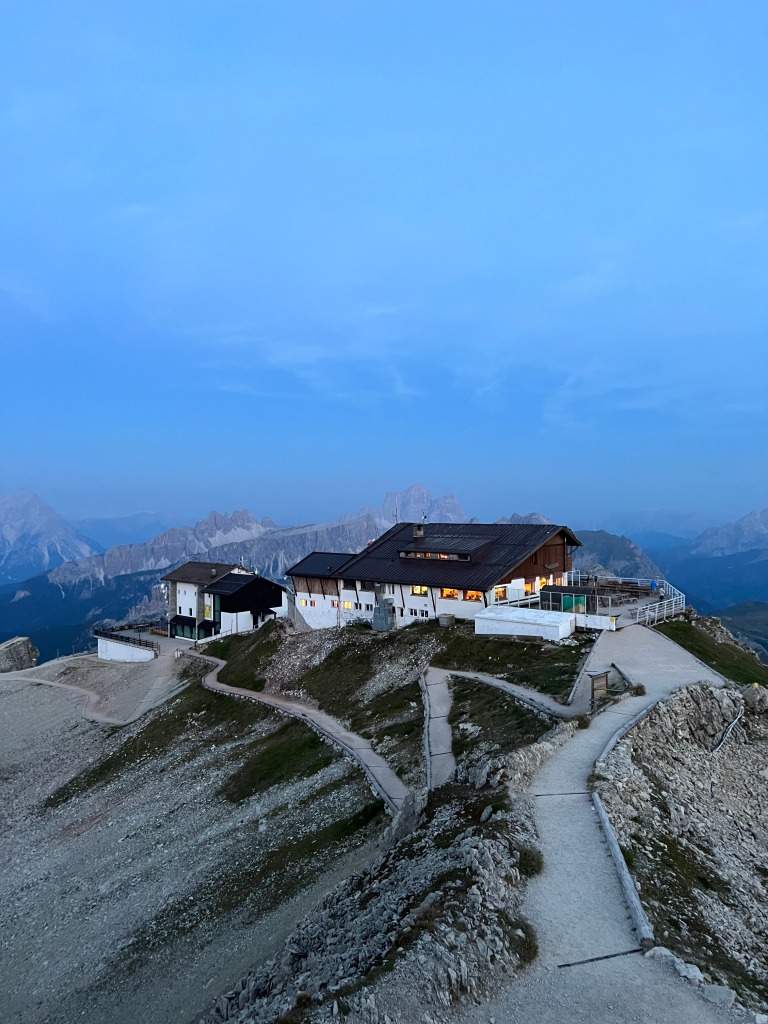
Wifi/Staying Connected
All Rifugios we stayed in in Europe had wifi. This includes the Dolomites (although not always working), and the Italian, French, and Swiss Alps. In Patagonia during the w-trek wifi was available for a cost. It was not cheap. You could pay about $10 for an hour of wifi if you really wanted it. Otherwise you were disconnected and service was rare if not at all (honestly we didn’t try very hard). Make sure to check in though, because it can go down and if you need to be reachable you may want to have a plan in place.
Showers
I don’t want to jinx myself, but I’ve never stayed in a Rifugio that didn’t have a warm shower. I have stayed in one or two where you had to pay for a timed shower, but the water was warm. If you have a private room your shower will likely be a normal hotel room type shower. Shared showers are generally still quite clean and well respected areas. We didn’t have any horror stories to share from any of the showers along our travels.
Views
There is nothing better than a few from your balcony in the mountains, or even out some of the bathroom windows I had some of the coolest views I’ve ever seen! They truly can’t be beat and make all the hard work to get there worth it!
